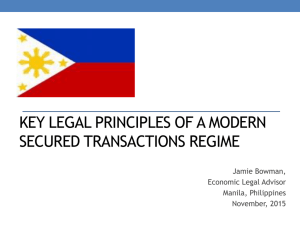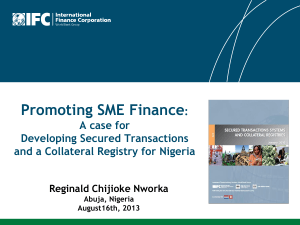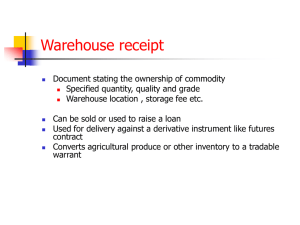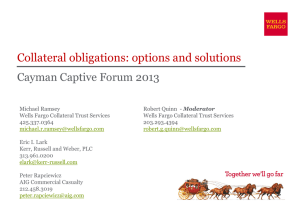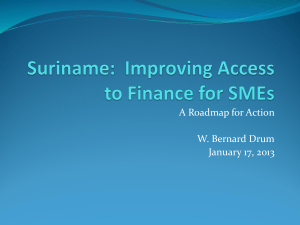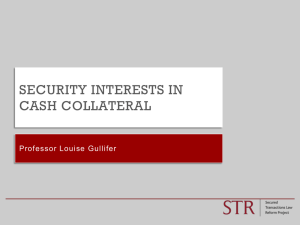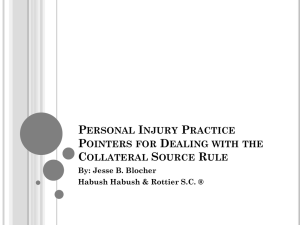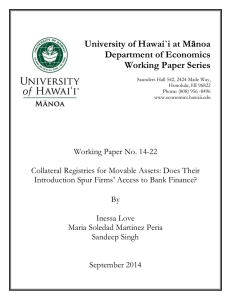Registry for Movable Assets
advertisement
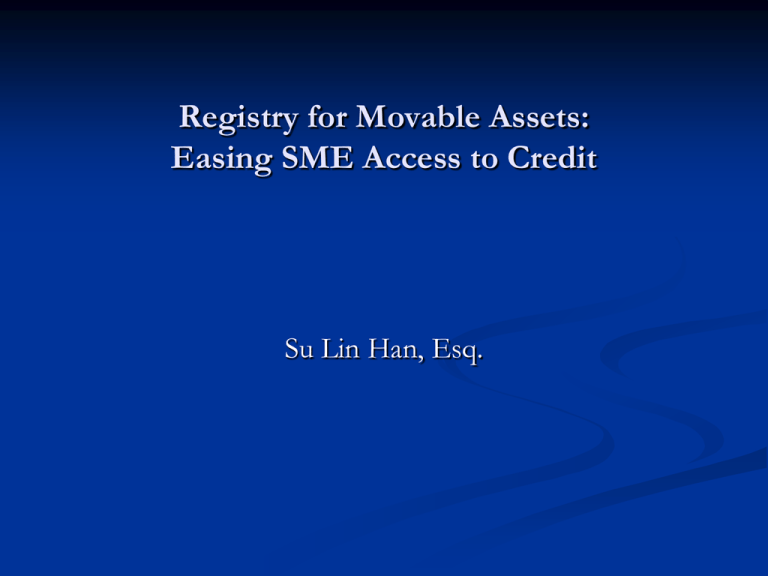
Registry for Movable Assets: Easing SME Access to Credit Su Lin Han, Esq. Movable Assets as Collateral SMEs financing constraints Guarantee or pledge of assets critical 92% of US small business loans are secured Movable assets as primary source of collateral owed by SMEs Equipment Inventory Receivables Need to develop modern collateral law system to improve access to financing by SMEs Legal and Institutional Framework Required Pledge law traces back to ancient times Possession is key E.g., pawn shop, warehouse bill of lading Modern collateral law allows NON-POSSESSORY pledges, opening the door to new types of assets which can be used by SMEs to obtain financing, e.g. Automobiles Changing pool of assets such as inventory Intangible and future-acquired assets such as accounts receivable Intellectual property rights Pillars of Modern Movable Collateral Law Framework Broad scope of permissible collateral Ease of Creation Centralized publicity system for pledged assets Clear priority rules Effective enforcement A well-functioning system requires all four elements to be established. Typically this entails both legal and institutional reforms which require changes to the existing collateral law, registry practice as well judicial enforcement process. Registry for Movable Collateral: Why We Should Care about Filing Registry for movable collateral enables lenders to take nonpossessory pledges against all types of movable assets, tangible or intangible, presently-owned or future-acquired. Filing reduces risk of lenders by making pledges in movable collateral transparent Filed notice tells a prospective pledgee information needed to make lending decisions, such as Whether pledgor’s asset may be subject to a prior pledge Contact information for existing pledgee so information can be obtained on prior pledge in the same collateral Filed notice establishes benchmark by which priority rules can be applied Characteristics of Modern Movable Collateral Registries Notice filing—Limited Purpose Notice of pledge Securing priority “Filing” vs. “Registration” Single, centralized registry archive for pledges of all kinds of movable property Web-based filing and searching Unique identification of notices Maximum transparency—minimum restraints on access to information Notice Filing Concept Relationship of parties established by pledge agreement, which is not filed Registration effected by submitting to registry only basic information about a creditor-debtor relationship: o o o Identity and Address of Creditor Identity and Address of Debtor Description of collateral NO OTHER DETAILS OF THE RELATIONSHIP Benefits of Modern Movable Collateral Registry Accuracy: User enters information Speed: Instantaneous filing and searching. Accessibility: 24/7 access from any place Cost effectiveness: Low cost and fees Simplicity: Minimal requirements Rule-based decisions: Uniform practices and standards for all users; certainty of results China Experience: Before 2007 Collateral legal system prior to 2005 severely inadequate to support SMEs to obtain financing using movable assets as collateral Restrictive scope of permissible collateral Excessive formalities required for creation of pledges Absence of a centralized publicity system Lack of clear priority rules Slow and costly enforcement China Experience: Post 2007 2005 Property Law introduces key elements of modern movable collateral law Expansion of permissible collateral to include inventory and receivables Establishment of centralized, modern receivables registries Issues not addressed by the Property Law Lack of clear legal guidance on key issues such as effect of registration, priority rules and enforcement mechanism The movable collateral registry system remains highly fragmented
